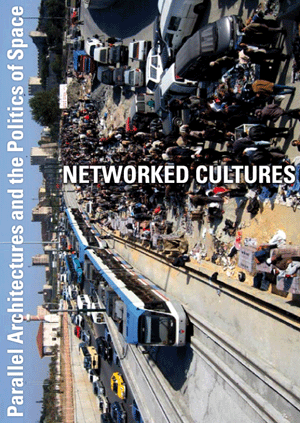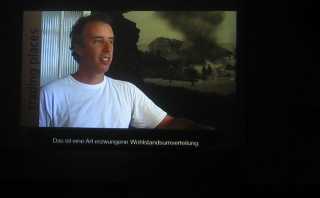_login
registrieren
_5 Factories - Worker Control in Venezuela Dario Azzellini & Oliver Ressler
_ALMOSTREAL ECF
_AnArchitektur Jesko Fezer
_Arizona Road Azra Aksamija
_Balkan Konsulat rotor
_Bata-ville: We are not afraid of the future Nina Pope + Karen Guthrie / www.somewhere.org.uk
_Black Benz Race krcf in collaboration with Felix Stalder, Arben Gecaj, Faton Topalli and Osman Osmani
_Black Sea Files Ursula Biemann
_Camp La Jolla Military ParkOwen Mundy
_CHANGE REALITY: Renaming the Streets of Zagreb REINIGUNGSGESELLSCHAFT
_Conceptual Paradise. There is a place for sophistication Stefan Roemer
_de-regulation Irit Rogoff, Kutlug Ataman, Stefan Roemer

____________Bloomberg SPACE, London
____________Kumu Art Museum Tallinn
____________Open Space, Open Systems - Vienna
____________CAA 2011 Conference, New York
____________Forum Stadtpark, Graz
____________Symposium, Istanbul
____________lungomare, Bozen/Bolzano
____________Metropolis Biennale 2007-17, Copenhagen
____________new publication available now
____________Mestna Galerija, Ljubljana
____________Livestream of Networked Cultures documentary
____________
|
2 - 4 April 2009
Intersections, Manchester
AAH Association of Art Historians
35th Annual Conference
Manchester Metropolitan University, Manchester
Session: Networked Cultures: Politics of Connectivity
Against the background of global structural transformation, networks have become one of the most prominent concepts relating to the search for new forms of social cohesion and solidarity. The question as to what forms such connectivity should take is not only theoretical in nature but above all a question that points to the self-induced multiplicity of spaces that is continually generated by connectivities throughout the world. Networks both structure and constitute an operational field for these proliferating global entanglements of people, places and interests. They become incorporated in space in different ways: in the form of translocal zones of action, community support structures, expanded spheres of influence, spatial superimpositions and intensive contacts and contaminations.

The engagement with these developments on the part of art and architecture in recent years has resulted in a new form of praxis founded on collective production, process-guided work and transversal project platforms. Such a ‘disciplineless’ praxis of unsolicited intervention in spatial contexts renders legible the dysfunctional rules of planned spatial and cultural containment and creates an avenue for generating new forms of circulation amidst the political efforts to conceal this failure. It makes use of existing networks, expands and changes them, gives rise to new circuits and thereby sketches a mobile geography of self-determined utilisations of space and culture. Through practical and theoretical work involved in the parameters of networked art production, this session interrogates the meanings of this politico-aesthetic landscape together with the meanings of artistic, architectural and cultural engagement in these dynamics.
Saturday, 4 April 2009, 9:30 AM - 3.30 PM
Chairs:
Peter Mörtenböck, Department of Visual Cultures, Goldsmiths, University of London
Helge Mooshammer, Institute of Art and Design, Vienna University of Technology
Speakers:
Lee Rodney (University of Windsor), Road Signs on the Border: Transnational Insecurity since 9/11.
Duncan Cook (Royal College of Art), From Eco-politics to Eco-aesthetics: Hybrid Collectives and Creative Connectivities.
Urduja Manaoag (Geneva University of Art and Design), Philippine Resources on the Web: Filipino Diaspora and Internet Participative Platforms.
Ayse N. Erek (Yeditepe University), Remixing the Landscape: New Technologies and Place.
Sophie Hope (Birkbeck, University of London), What ever happened to cultural democracy?
see also _texts: What Ever Happened to Cultural Democrazy
Marga van Mechelen (University of Amsterdam), New Babylon or a virtual house for the artworld citizen.
see also _texts: Survial Kits: Artistic Responses to Globalization
12.45 PM
Screening of the documentary Networked Cultures (dir. Peter Mörtenböck and Helge Mooshammer, 2008)
The 35th AAH Annual Conference, Intersections, will be held at Manchester Metropolitan University from 2 - 4 April 2009. It will focus on the intersections (connections, linkages, overlaps) of art history with different disciplinary, methodological, political and historical spaces. Three areas of intersection might be identified: between areas of convention and innovation within the discipline; between art history and its adjacent fields of inquiry, display and production; and between the subjects and objects of interpretative and historical practice. In this light, intersections can be understood as the convergence, however temporary or in-process, of art history’s divergent values and practices.
Within the discipline, areas of intersection may encompass: the descriptive, interrogative, ethical, pedagogical and critical elements of art historical practice. Between art history and its adjacent fields lie the margins, overlaps and divisions that notions of intersectionality are able to highlight. Interactions with visual processes and practitioners invoke social worlds, individuals, performative and public spaces.
Intersections opens up room for a variety of critical engagements with, and creative responses to, traditional and new art histories. What are the issues and implications involved in locating and exploring the crossovers of visual and cultural histories and practices? How should historians of the visual consider the intersections between interpretative subjects and objects? By looking at the boundaries and meeting points of different histories of art, what new intersections emerge? What are the intersections between artistic and other aspects of visual culture, such as the popular? What are intersections between different artistic media? This conference will provide a platform for the interrogation of these and other intersections that define and challenge art history.
|
+ Ana Dzokic and Marc Neelen
+ Ayreen Anastas and Rene Gabri
+ atelier d'architecture autogérée (aaa)
+ Asya Filippova
+ Sophie Hope and Sarah Carrington
+ Branca Curcic
+ Christoph Schaefer
+ Campement Urbain
+ Claudia Zanfi
+ Despoina Sevasti and Poka-Yio
+ Erden Kosova
+ Helmut Batista
Radio as Spatial Practiceby: Paulo Tavares
Survival Kits: Artistic Responses to Globalizationby: Marga van Mechelen
What Ever Happened to Cultural Democracy?by: Sophie Hope
I don't know how to explain ...by: Anca Gyemant
Trading Placesby: Peter Moertenboeck & Helge Mooshammer
Milosevic as Architectby: Srdjan Jovanovic Weiss
When the Unavoidable Knocks at the Door ...by: Gulsen Bal
Tracing Translocality: The BlackBenz Raceby: Felix Stalder
travelling lexicon towards a global positioning systemby: Celine Condorelli
|

